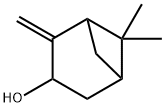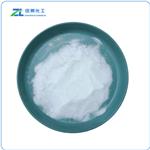Chemical Properties
2(10)-Pinen-3-ol has a warm, woody, balsamic, slightly piney, fennel-like odor.
Occurrence
Reported found in grapefruit peel oil, bilberries, black currant (buds), other types of ginger, Scotch spearmint
oil, pepper, Thymus vulgaris L., hop oil, cognac, myrtle leaf and Roman chamomile.
Uses
This cyclic terpene alcohol, pinocarveol, has been used in perfume compositions. The material has also been commercially available as an intermediate.
Production Methods
Pinocarveol is produced from Pinyl aminoacetate or -nitrate with Nitrous acid, by isolation from Eucalyptus oil tail fractions, by Meerwein-Ponndorf-Verley reduction of Pinocarvone, or by Autoxidation of beta-Pinene with Cobalt siccative or by oxidation with Selenium oxide.
Definition
ChEBI: A pinane monoterpenoid that is a bicyclo[3.1.1]heptane substituted by two methyl groups at position 6, a methylidene group at position 2 and a hydroxy group at position 3.
Taste threshold values
Taste characteristics at 25 ppm: camphoraceous, woody, pine-like with fresh, cooling minty undernotes
Flammability and Explosibility
Non flammable


